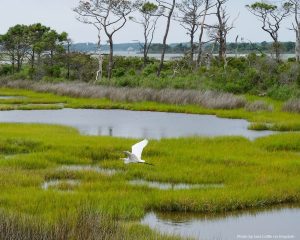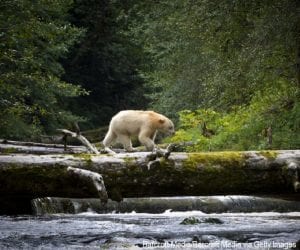Through our exploration of temperate forests and tropical rainforests, we have learned the value that different types of forests bring to our planet. We have also learned that not every forest is created equal. Old-growth forests in particular have distinctive traits that fill a special, important role in keeping Earth healthy.
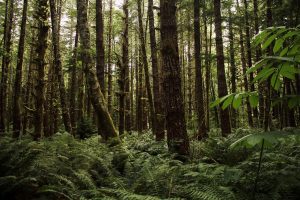
Characteristics of Old-Growth Forests
So what makes an old-growth forest “old.” Turns out, there is no set, universal criteria that designates a forest as an “old,” yet there are some common characteristics of old-growth forests. Generally, trees in an old-growth forest must be a minimum certain age (typically over or nearly 100 years old), some have diameter size requirements, and all have a dense canopy that does not often allow species that require a lot of light to survive there. Each type of forest has different standards to be classified as “old-growth.” According to the Minnesota Department of Natural Resources, for an oak forest to be considered “old”, it must have trees that are at least 120 years old and reach an average diameter of 10-15 inches. In contrast, a white spruce forest only has to be 90 years old to be considered an “old-growth forest” and does not list a diameter requirement.
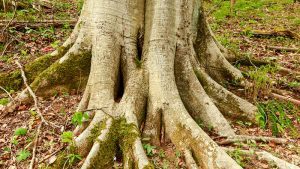
Age and size are not the only characteristics of an old-growth forest. Old-growth forests remain undisturbed by human activity and have many unique features as a result. The fallen trees and other dead, decomposing material lining the forest floor make old-growth forests one of the few places on Earth where topsoil is created rather than destroyed. Old-growth forests also provide important habitat for a variety of species. Many different insects, fungi, reptiles, and amphibians thrive in the shaded environment, creating high levels of biodiversity. Biodiversity helps build resiliency in old-growth forests that protects it from disasters: both natural and human-made.
Cultural Value of Old-Growth Forests
Old-growth forests also hold cultural value for Indigenous populations in North America. Long before colonization of this land, Indigenous Peoples were using resources from old-growth forests in their daily life, operating with respect for and in community with the trees and other wildlife in them. The Nuu-Chah-Nulth Peoples (in current day British Columbia, Canada) “use old-growth red cedars for cultural items such as woven hats, dugout canoes, totems, bentwood boxes, and regalia.” Preservation of their, and many other Indigenous Peoples’, history and culture relies on the preservation of old-growth forests.
Old-Growth Forests and Climate Change
Old-growth forests aren’t just a natural wonder to behold, full of massive trees, diverse wildlife, and rich with cultural value. Old-growth forests are also vital to the fight against climate change.
Trees in old-growth forests hold more carbon than any other trees. Scientists found that of six national forests in Oregon, 42% of forest carbon was found in the biggest 3% of trees. Yet, industries continue to log and clear-cut these forests for human goods and services, looking past the impact that losing old-growth forests has on our own longevity.
In addition to the direct harm humans inflict through logging, fallout from human-caused climate change, including severe drought, wildfires, more powerful/frequent storms, and invasive insects, are damaging old-growth forests. When we damage old-growth forests we lose this natural system combating the climate change caused by our fossil-fuel emissions.
Why Planting New Trees Cannot Replace Old-Growth Trees
While there are many organizations working to counter this damage by planting trees, young trees do not have the same impact on the environment as those in old-growth forests. Groups representing timber industries have tried to argue that because the rate at which trees absorb carbon slows with age, young trees are more environmentally beneficial than old trees, supporting their mission to clear old-growth forests and replace them with new ones. This, however, is a dangerous misunderstanding of the significance that the carbon in old-growth forests holds. When trees die, all of the carbon they have absorbed is released back into the atmosphere. Trees cut by the timber industry are largely used for single-use products like paper or cardboard, releasing stored carbon. The release of this carbon is more detrimental to the environment than any amount of new trees can atone for. Additionally, it can take young forests decades to store as much carbon as old-growth forests, which is longer than we have to effectively address climate change.
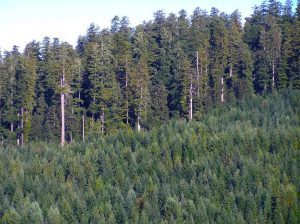
With trees over 300 feet tall, an old-growth redwood forest towers over a hillside of fifty-year-old replanted Douglas-fir trees in California. The hillside was clear-cut logged of old-growth redwoods in the 1960s.
Old-Growth Forest Protection
Recent conversations to protect old-growth forests in the U.S. include an executive order released in 2022 by the Biden administration to have scientists study old-growth forests and ways to protect them. The White House has since followed up with proposals to make adjustments to plans of various organizations to ensure mature and old-growth forests are protected. Among these changes from government organizations, the U.S. Forest Service is working on a National Old-Growth Amendment, taking into consideration Indigenous Knowledge in addition to scientific advice to respond to conditions that threaten old-growth forests. The inclusion of Indigenous Knowledge is vital to preserving the abundance of resources provided by the old-growth forests.
Continuing down this path of prioritizing conservation of old-growth forests, the U.S. has the opportunity to set themselves up well to combat climate change.
Old-Growth Forest Map
In the U.S. and want to see an old-growth forest for yourself? Explore this interactive map by the Old-Growth Forest Network to discover an old growth forest near you!
Image credits: Forest in British Columbia (Government embarks on new approach to old forests by Province of British Columbia is licensed under CC BY-NC-ND 2.0); Roots (Old-Growth Forest on the Oak Ridge Reservation by U.S. Department of Energy is a United States government work); Redwoods (Old-growth redwoods and second-growth forest by Redwood National and State Park is Public Domain)



